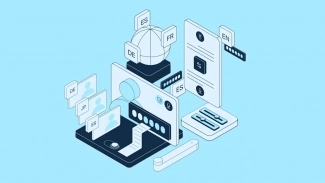sshd_config
NAME
SYNOPSIS
DESCRIPTION
sshd(8)
reads configuration data from
(or the file specified with
on the command line).
The file contains keyword-argument pairs, one per line.
Lines starting with
and empty lines are interpreted as comments.
Arguments may optionally be enclosed in double quotes
in order to represent arguments containing spaces.
The possible
keywords and their meanings are as follows (note that
keywords are case-insensitive and arguments are case-sensitive):
- AcceptEnv Specifies what environment variables sent by the client will be copied into the session's environ(7) See in ssh_config(5) for how to configure the client. Note that environment passing is only supported for protocol 2. Variables are specified by name, which may contain the wildcard characters and Multiple environment variables may be separated by whitespace or spread across multiple directives. Be warned that some environment variables could be used to bypass restricted user environments. For this reason, care should be taken in the use of this directive. The default is not to accept any environment variables.
- AddressFamily Specifies which address family should be used by sshd(8) Valid arguments are (use IPv4 only), or (use IPv6 only). The default is
- AllowGroups This keyword can be followed by a list of group name patterns, separated by spaces. If specified, login is allowed only for users whose primary group or supplementary group list matches one of the patterns. Only group names are valid; a numerical group ID is not recognized. By default, login is allowed for all groups. The allow/deny directives are processed in the following order: and finally
See
in
ssh_config(5)
for more information on patterns.
AllowTcpForwarding
Specifies whether TCP forwarding is permitted.
The default is
Note that disabling TCP forwarding does not improve security unless
users are also denied shell access, as they can always install their
own forwarders.
AllowUsers
This keyword can be followed by a list of user name patterns, separated
by spaces.
If specified, login is allowed only for user names that
match one of the patterns.
Only user names are valid; a numerical user ID is not recognized.
By default, login is allowed for all users.
If the pattern takes the form USER@HOST then USER and HOST
are separately checked, restricting logins to particular
users from particular hosts.
The allow/deny directives are processed in the following order:
and finally
See
in
ssh_config(5)
for more information on patterns.
AuthorizedKeysFile
Specifies the file that contains the public keys that can be used
for user authentication.
may contain tokens of the form %T which are substituted during connection
setup.
The following tokens are defined: %% is replaced by a literal '%',
%h is replaced by the home directory of the user being authenticated, and
%u is replaced by the username of that user.
After expansion,
is taken to be an absolute path or one relative to the user's home
directory.
The default is
Banner
In some jurisdictions, sending a warning message before authentication
may be relevant for getting legal protection.
The contents of the specified file are sent to the remote user before
authentication is allowed.
This option is only available for protocol version 2.
By default, no banner is displayed.
ChallengeResponseAuthentication
Specifies whether challenge-response authentication is allowed.
All authentication styles from
login.conf(5)
are supported.
The default is
Ciphers
Specifies the ciphers allowed for protocol version 2.
Multiple ciphers must be comma-separated.
The supported ciphers are
and
The default is:
aes128-cbc,3des-cbc,blowfish-cbc,cast128-cbc,arcfour128, arcfour256,arcfour,aes192-cbc,aes256-cbc,aes128-ctr, aes192-ctr,aes256-ctr
The default value is 3.
If
(see below) is set to 15, and
is left at the default, unresponsive SSH clients
will be disconnected after approximately 45 seconds.
This option applies to protocol version 2 only.
ClientAliveInterval
Sets a timeout interval in seconds after which if no data has been received
from the client,
sshd(8)
will send a message through the encrypted
channel to request a response from the client.
The default
is 0, indicating that these messages will not be sent to the client.
This option applies to protocol version 2 only.
Compression
Specifies whether compression is allowed, or delayed until
the user has authenticated successfully.
The argument must be
or
The default is
DenyGroups
This keyword can be followed by a list of group name patterns, separated
by spaces.
Login is disallowed for users whose primary group or supplementary
group list matches one of the patterns.
Only group names are valid; a numerical group ID is not recognized.
By default, login is allowed for all groups.
The allow/deny directives are processed in the following order:
and finally
See
in
ssh_config(5)
for more information on patterns.
DenyUsers
This keyword can be followed by a list of user name patterns, separated
by spaces.
Login is disallowed for user names that match one of the patterns.
Only user names are valid; a numerical user ID is not recognized.
By default, login is allowed for all users.
If the pattern takes the form USER@HOST then USER and HOST
are separately checked, restricting logins to particular
users from particular hosts.
The allow/deny directives are processed in the following order:
and finally
See
in
ssh_config(5)
for more information on patterns.
ForceCommand
Forces the execution of the command specified by
ignoring any command supplied by the client.
The command is invoked by using the user's login shell with the -c option.
This applies to shell, command, or subsystem execution.
It is most useful inside a
block.
The command originally supplied by the client is available in the
environment variable.
GatewayPorts
Specifies whether remote hosts are allowed to connect to ports
forwarded for the client.
By default,
sshd(8)
binds remote port forwardings to the loopback address.
This prevents other remote hosts from connecting to forwarded ports.
can be used to specify that sshd
should allow remote port forwardings to bind to non-loopback addresses, thus
allowing other hosts to connect.
The argument may be
to force remote port forwardings to be available to the local host only,
to force remote port forwardings to bind to the wildcard address, or
to allow the client to select the address to which the forwarding is bound.
The default is
GSSAPIAuthentication
Specifies whether user authentication based on GSSAPI is allowed.
The default is
Note that this option applies to protocol version 2 only.
GSSAPIKeyExchange
Specifies whether key exchange based on GSSAPI is allowed. GSSAPI key exchange
doesn't rely on ssh keys to verify host identity.
The default is
Note that this option applies to protocol version 2 only.
GSSAPICleanupCredentials
Specifies whether to automatically destroy the user's credentials cache
on logout.
The default is
Note that this option applies to protocol version 2 only.
GSSAPIStrictAcceptorCheck
Determines whether to be strict about the identity of the GSSAPI acceptor
a client authenticates against. If
then the client must authenticate against the
service on the current hostname. If
then the client may authenticate against any service key stored in the
machine's default store. This facility is provided to assist with operation
on multi homed machines.
The default is
Note that this option applies only to protocol version 2 GSSAPI connections,
and setting it to
may only work with recent Kerberos GSSAPI libraries.
HostbasedAuthentication
Specifies whether rhosts or /etc/hosts.equiv authentication together
with successful public key client host authentication is allowed
(host-based authentication).
This option is similar to
and applies to protocol version 2 only.
The default is
HostbasedUsesNameFromPacketOnly
Specifies whether or not the server will attempt to perform a reverse
name lookup when matching the name in the
and
files during
A setting of
means that
sshd(8)
uses the name supplied by the client rather than
attempting to resolve the name from the TCP connection itself.
The default is
HostKey
Specifies a file containing a private host key
used by SSH.
The default is
for protocol version 1, and
and
for protocol version 2.
Note that
sshd(8)
will refuse to use a file if it is group/world-accessible.
It is possible to have multiple host key files.
keys are used for version 1 and
or
are used for version 2 of the SSH protocol.
IgnoreRhosts
Specifies that
and
files will not be used in
or
and
are still used.
The default is
IgnoreUserKnownHosts
Specifies whether
sshd(8)
should ignore the user's
during
or
The default is
KerberosAuthentication
Specifies whether the password provided by the user for
will be validated through the Kerberos KDC.
To use this option, the server needs a
Kerberos servtab which allows the verification of the KDC's identity.
The default is
KerberosGetAFSToken
If AFS is active and the user has a Kerberos 5 TGT, attempt to acquire
an AFS token before accessing the user's home directory.
The default is
KerberosOrLocalPasswd
If password authentication through Kerberos fails then
the password will be validated via any additional local mechanism
such as
The default is
KerberosTicketCleanup
Specifies whether to automatically destroy the user's ticket cache
file on logout.
The default is
KeyRegenerationInterval
In protocol version 1, the ephemeral server key is automatically regenerated
after this many seconds (if it has been used).
The purpose of regeneration is to prevent
decrypting captured sessions by later breaking into the machine and
stealing the keys.
The key is never stored anywhere.
If the value is 0, the key is never regenerated.
The default is 3600 (seconds).
ListenAddress
Specifies the local addresses
sshd(8)
should listen on.
The following forms may be used:
- t
t
t
If
is not specified,
sshd will listen on the address and all prior
options specified.
The default is to listen on all local addresses.
Multiple
options are permitted.
Additionally, any
options must precede this option for non-port qualified addresses.
LoginGraceTime
The server disconnects after this time if the user has not
successfully logged in.
If the value is 0, there is no time limit.
The default is 120 seconds.
LogLevel
Gives the verbosity level that is used when logging messages from
sshd(8)
The possible values are:
SILENT, QUIET, FATAL, ERROR, INFO, VERBOSE, DEBUG, DEBUG1, DEBUG2, and DEBUG3.
The default is INFO.
DEBUG and DEBUG1 are equivalent.
DEBUG2 and DEBUG3 each specify higher levels of debugging output.
Logging with a DEBUG level violates the privacy of users and is not recommended.
MACs
Specifies the available MAC (message authentication code) algorithms.
The MAC algorithm is used in protocol version 2
for data integrity protection.
Multiple algorithms must be comma-separated.
The default is:
Match
Introduces a conditional block.
If all of the criteria on the
line are satisfied, the keywords on the following lines override those
set in the global section of the config file, until either another
line or the end of the file.
The arguments to
are one or more criteria-pattern pairs.
The available criteria are
and
Only a subset of keywords may be used on the lines following a
keyword.
Available keywords are
and
MaxAuthTries
Specifies the maximum number of authentication attempts permitted per
connection.
Once the number of failures reaches half this value,
additional failures are logged.
The default is 6.
MaxStartups
Specifies the maximum number of concurrent unauthenticated connections to the
SSH daemon.
Additional connections will be dropped until authentication succeeds or the
expires for a connection.
The default is 10.
Alternatively, random early drop can be enabled by specifying
the three colon separated values
(e.g. "10:30:60").
sshd(8)
will refuse connection attempts with a probability of
(30%)
if there are currently
(10)
unauthenticated connections.
The probability increases linearly and all connection attempts
are refused if the number of unauthenticated connections reaches
(60).
PasswordAuthentication
Specifies whether password authentication is allowed.
The default is
PermitEmptyPasswords
When password authentication is allowed, it specifies whether the
server allows login to accounts with empty password strings.
The default is
PermitOpen
Specifies the destinations to which TCP port forwarding is permitted.
The forwarding specification must be one of the following forms:
- t
t
t
Multiple forwards may be specified by separating them with whitespace.
An argument of
can be used to remove all restrictions and permit any forwarding requests.
By default all port forwarding requests are permitted.
PermitRootLogin
Specifies whether root can log in using
ssh(1)
The argument must be
or
The default is
If this option is set to
password authentication is disabled for root.
If this option is set to
root login with public key authentication will be allowed,
but only if the
option has been specified
(which may be useful for taking remote backups even if root login is
normally not allowed).
All other authentication methods are disabled for root.
If this option is set to
root is not allowed to log in.
PermitTunnel
Specifies whether
tun(4)
device forwarding is allowed.
The argument must be
(layer 3),
(layer 2), or
Specifying
permits both
and
The default is
PermitUserEnvironment
Specifies whether
and
options in
are processed by
sshd(8)
The default is
Enabling environment processing may enable users to bypass access
restrictions in some configurations using mechanisms such as
PidFile
Specifies the file that contains the process ID of the
SSH daemon.
The default is
when a user logs in interactively.
(On some systems it is also printed by the shell,
or equivalent.)
The default is
Protocol
Specifies the protocol versions
sshd(8)
supports.
The possible values are
and
Multiple versions must be comma-separated.
The default is
Note that the order of the protocol list does not indicate preference,
because the client selects among multiple protocol versions offered
by the server.
Specifying
is identical to
PubkeyAuthentication
Specifies whether public key authentication is allowed.
The default is
Note that this option applies to protocol version 2 only.
RhostsRSAAuthentication
Specifies whether rhosts or /etc/hosts.equiv authentication together
with successful RSA host authentication is allowed.
The default is
This option applies to protocol version 1 only.
RSAAuthentication
Specifies whether pure RSA authentication is allowed.
The default is
This option applies to protocol version 1 only.
ServerKeyBits
Defines the number of bits in the ephemeral protocol version 1 server key.
The minimum value is 512, and the default is 768.
StrictModes
Specifies whether
sshd(8)
should check file modes and ownership of the
user's files and home directory before accepting login.
This is normally desirable because novices sometimes accidentally leave their
directory or files world-writable.
The default is
Subsystem
Configures an external subsystem (e.g. file transfer daemon).
Arguments should be a subsystem name and a command (with optional arguments)
to execute upon subsystem request.
The command
sftp-server(8)
implements the
file transfer subsystem.
By default no subsystems are defined.
Note that this option applies to protocol version 2 only.
SyslogFacility
Gives the facility code that is used when logging messages from
sshd(8)
The possible values are: DAEMON, USER, AUTH, LOCAL0, LOCAL1, LOCAL2,
LOCAL3, LOCAL4, LOCAL5, LOCAL6, LOCAL7.
The default is AUTH.
TCPKeepAlive
Specifies whether the system should send TCP keepalive messages to the
other side.
If they are sent, death of the connection or crash of one
of the machines will be properly noticed.
However, this means that
connections will die if the route is down temporarily, and some people
find it annoying.
On the other hand, if TCP keepalives are not sent,
sessions may hang indefinitely on the server, leaving
users and consuming server resources.
The default is
(to send TCP keepalive messages), and the server will notice
if the network goes down or the client host crashes.
This avoids infinitely hanging sessions.
To disable TCP keepalive messages, the value should be set to
This option was formerly called
UseDNS
Specifies whether
sshd(8)
should look up the remote host name and check that
the resolved host name for the remote IP address maps back to the
very same IP address.
The default is
UseLogin
Specifies whether
login(1)
is used for interactive login sessions.
The default is
Note that
login(1)
is never used for remote command execution.
Note also, that if this is enabled,
will be disabled because
login(1)
does not know how to handle
xauth(1)
cookies.
If
is specified, it will be disabled after authentication.
UsePAM
Enables the Pluggable Authentication Module interface.
If set to
this will enable PAM authentication using
and
in addition to PAM account and session module processing for all
authentication types.
Because PAM challenge-response authentication usually serves an equivalent
role to password authentication, you should disable either
or
If
is enabled, you will not be able to run
sshd(8)
as a non-root user.
The default is
UsePrivilegeSeparation
Specifies whether
sshd(8)
separates privileges by creating an unprivileged child process
to deal with incoming network traffic.
After successful authentication, another process will be created that has
the privilege of the authenticated user.
The goal of privilege separation is to prevent privilege
escalation by containing any corruption within the unprivileged processes.
The default is
X11DisplayOffset
Specifies the first display number available for
sshd(8)
X11 forwarding.
This prevents sshd from interfering with real X11 servers.
The default is 10.
X11Forwarding
Specifies whether X11 forwarding is permitted.
The argument must be
or
The default is
When X11 forwarding is enabled, there may be additional exposure to
the server and to client displays if the
sshd(8)
proxy display is configured to listen on the wildcard address (see
below), though this is not the default.
Additionally, the authentication spoofing and authentication data
verification and substitution occur on the client side.
The security risk of using X11 forwarding is that the client's X11
display server may be exposed to attack when the SSH client requests
forwarding (see the warnings for
in
ssh_config(5)
A system administrator may have a stance in which they want to
protect clients that may expose themselves to attack by unwittingly
requesting X11 forwarding, which can warrant a
setting.
Note that disabling X11 forwarding does not prevent users from
forwarding X11 traffic, as users can always install their own forwarders.
X11 forwarding is automatically disabled if
is enabled.
X11UseLocalhost
Specifies whether
sshd(8)
should bind the X11 forwarding server to the loopback address or to
the wildcard address.
By default,
sshd binds the forwarding server to the loopback address and sets the
hostname part of the
environment variable to
This prevents remote hosts from connecting to the proxy display.
However, some older X11 clients may not function with this
configuration.
may be set to
to specify that the forwarding server should be bound to the wildcard
address.
The argument must be
or
The default is
XAuthLocation
Specifies the full pathname of the
xauth(1)
program.
The default is
TIME FORMATS
sshd(8)
command-line arguments and configuration file options that specify time
may be expressed using a sequence of the form:
where
is a positive integer value and
is one of the following:
- none seconds
- S seconds
- M minutes
- H hours
- D days
- W weeks
Each member of the sequence is added together to calculate
the total time value.
Time format examples:
- 600 600 seconds (10 minutes)
- 10m 10 minutes
- 1h30m 1 hour 30 minutes (90 minutes)
FILES
- /etc/ssh/sshd_config Contains configuration data for sshd(8) This file should be writable by root only, but it is recommended (though not necessary) that it be world-readable.
SEE ALSO
sshd(8)
AUTHORS
OpenSSH is a derivative of the original and free
ssh 1.2.12 release by Tatu Ylonen.
Aaron Campbell, Bob Beck, Markus Friedl, Niels Provos,
Theo de Raadt and Dug Song
removed many bugs, re-added newer features and
created OpenSSH.
Markus Friedl contributed the support for SSH
protocol versions 1.5 and 2.0.
Niels Provos and Markus Friedl contributed support
for privilege separation.





















